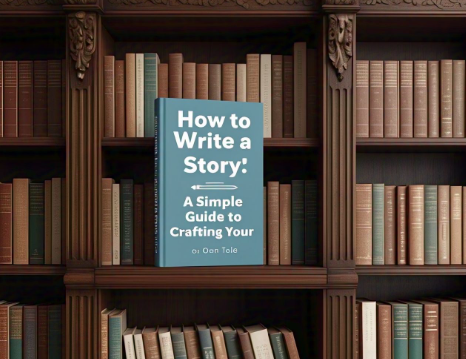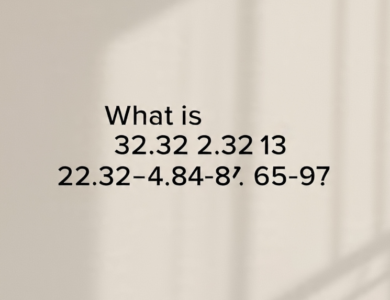
Learning how to write a story might seem hard at first, but it can be easy if you know the right steps to follow. Whether you’re telling a fun adventure or a heartwarming moment, writing a story allows you to bring your ideas to life. In this post, we’ll explore how to write a story, from coming up with a great idea to polishing your draft for others to enjoy.
To start, think about what you want your story to be about. Are you creating characters, exploring a new world, or solving a mystery? The first step in how to write a story is to decide what kind of story you want to tell. Then, you can work on making it exciting and fun for your readers.
Table of Contents
How to Write a Story: Finding Your Idea
To begin, the first step in learning how to write a story is to choose what your story will be about. Think about your favorite things – animals, magic, or adventure. You can create a story around anything that excites you. If you want your story to be interesting, try to pick a theme that people will enjoy reading about.
Ideas can come from all around you. Maybe a fun thing happened to you at school, or you saw something cool on TV. Sometimes, just taking a walk and thinking about what could happen in a place you know can spark an idea. Try to imagine something exciting, something that could get readers curious right from the start.
How to Write a Story: Building Strong Characters
A good story needs characters that readers care about. These characters can be real people or imaginary ones, but they should feel real. When you write about your character, describe what they look like, what they like to do, and what problems they face. The more real they feel, the more readers will be drawn into your story.
Your characters don’t have to be perfect – in fact, it’s better if they have flaws. Maybe your character is brave but a little scared sometimes, or they are kind but make mistakes. Readers love characters who grow and change, so think about how your characters will grow during the story.
How to Write a Story: Crafting a Beginning That Hooks the Reader
The beginning of your story is important. It’s the first thing readers will see, so you want to make it exciting and interesting. Start with something that grabs attention, like a big problem or a mysterious event. You can also introduce a question that readers will want to know the answer to.
For example, instead of starting with “Once upon a time,” try something like, “Samantha was running as fast as she could, but the monster was getting closer.” This makes the reader want to find out what happens next. Your beginning should make them think, “I have to keep reading!”
How to Write a Story’s Ending: Giving Your Readers a Satisfying Conclusion
The end of your story is just as important as the beginning. A good ending wraps up all the problems your characters face and gives a solution. It doesn’t have to be a happy ending, but it should make sense and feel complete. Readers want to feel that the story has ended, not left hanging.
You can surprise your readers with an unexpected twist or let the character solve their problem in an interesting way. Remember, the ending should match the tone of the story. If your story is happy, the ending should be positive. If it’s sad, the ending can reflect that.
Subheading: Different Ways to End Your Story
- Surprise Ending: A twist that makes the reader rethink everything.
- Happy Ending: The characters solve their problems and feel good about themselves.
- Open Ending: Leave a few questions unanswered for the reader to think about.
How to Write a Story: Revising and Polishing Your Work

Once you’ve written your story, it’s time to revise. This is where you read your work and fix anything that doesn’t sound right. Maybe a character said something that doesn’t fit, or the story doesn’t flow well. This is normal! You want to make sure your story is as clear and interesting as possible before you share it with others.
It helps to read your story out loud. Sometimes, when you hear it, you can spot places that need work. If you have someone else read it, they might also have good ideas to help you improve the story. Revising is where your story really comes to life!
Subheading: Simple Ways to Improve Your Story
- Check for Repetition: Make sure you’re not repeating the same words or ideas too much.
- Clarify the Plot: Ensure the story makes sense from start to finish.
- Add Descriptions: Make your characters, places, and events come alive with details.
How to Write a Story: Making Your Writing Clear and Easy to Read
When writing your story, it’s important to use simple and clear words. If your writing is easy to read, your readers will enjoy it more. Avoid long, complicated sentences and try to break things down into smaller, easier-to-understand chunks. This makes the story more fun for everyone to read, especially younger readers.
Also, remember to use short paragraphs and simple words that everyone can understand. Writing in a way that’s easy to follow will keep your readers engaged. Always make sure that the story is written in a way that’s enjoyable for your audience.
Subheading: Tips for Writing Clearly
- Use Short Sentences: Keep sentences simple and easy to follow.
- Avoid Hard Words: Use words that are easy for everyone to understand.
- Break Up Paragraphs: Don’t make your paragraphs too long – keep them short.
Conclusion:
Now that you know how to write a story, it’s time to start! Remember, writing can be fun and exciting. Don’t worry if it’s not perfect at first. Just let your imagination run wild and try your best. The more you practice, the better you’ll get at writing stories people will love to read.
So, pick your idea, create your characters, and write an amazing story! With a little time and effort, you’ll be telling great stories that will make people smile, think, or even laugh. Keep writing, and soon you’ll see how much fun it can be!


